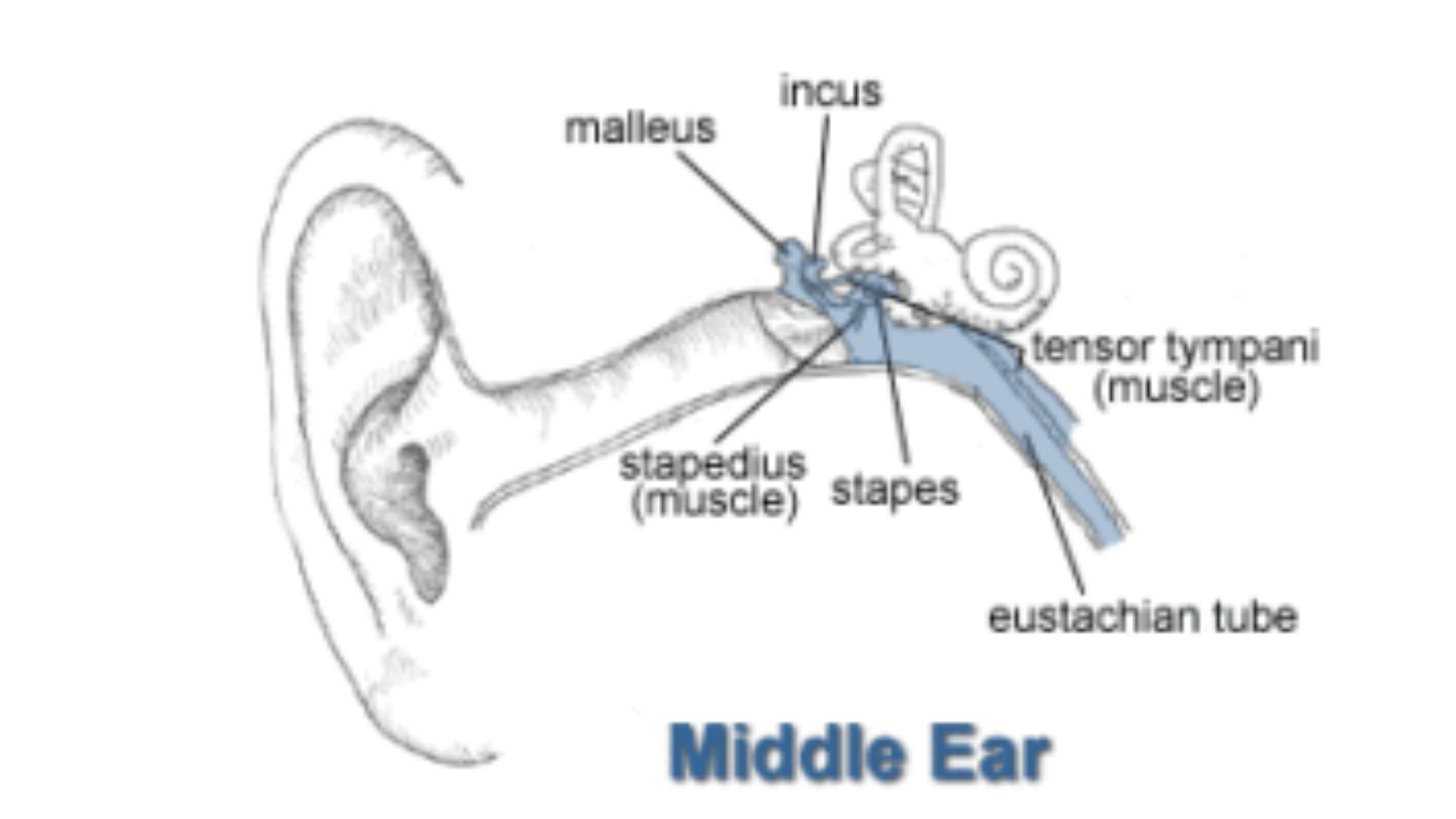The Middle Part of the Ear
The purpose of the middle ear is to conduct sound from the outer ear to the inner ear. There are three main features of the middle ear. The ossicles, muscles and the eustachian tube.

Without the transformer action of the middle ear, only about 1/1000 of the acoustic energy in air would be transmitted to the inner-ear fluids (a loss of about 30 dB). The malleus and the incus vibrate together, transmitting the sound waves from the eardrum to the footplate of the stapes (this pushes the oval window in and out).
Ossicles
- The Ossicles (bones) are made up othe the malleus (hammer), the incus (anvil), and the stapes (stirrup).
- The primary function of the middle ear is to transform the vibrating motion of the eardrum into motion of the stapes. The middle ear enhances the transfer of this acoustical energy in two ways:
- The area of the eardrum is about 17 times larger than the oval window (see inner ear). The effective pressure (force per unit area) is increased by this amount.
- The ossicles produce a lever action that further amplifies the pressure. As a result, most of the energy entering normal ears through the eardrum is transmitted into motion of the stapes and stimulation of the inner ear system.
Muscles
These include the tensor tympani and the stapedius. Attached to the malleus and stapes, the stapedius and tensor tympani muscles help keep the ossicles in their correct position and protect the internal ear from excessive sound levels. When the ear is exposed to sound levels above 80 dB, the muscles contract, decreasing the amount of energy transferred to the oval window. This protective reflex, known as the “aural reflex,” does not actually react fast enough to provide protection against impulse sounds and the muscles do not stay contracted long enough to provide protection from long-term steady exposure.
Eustachian Tube
The eustachian tube connects the front wall of the middle ear with the nasal air passages. The eustachian tube also operates like a valve, which opens during swallowing. This equalizes the pressure on either side of the eardrum, which is necessary for optimal hearing. Without this function, a difference between the static pressure in the middle ear and the outside pressure may develop, causing the eardrum to displace inward or outward. This reduces the efficiency of the middle ear and less acoustic energy will be transmitted to the inner ear.
